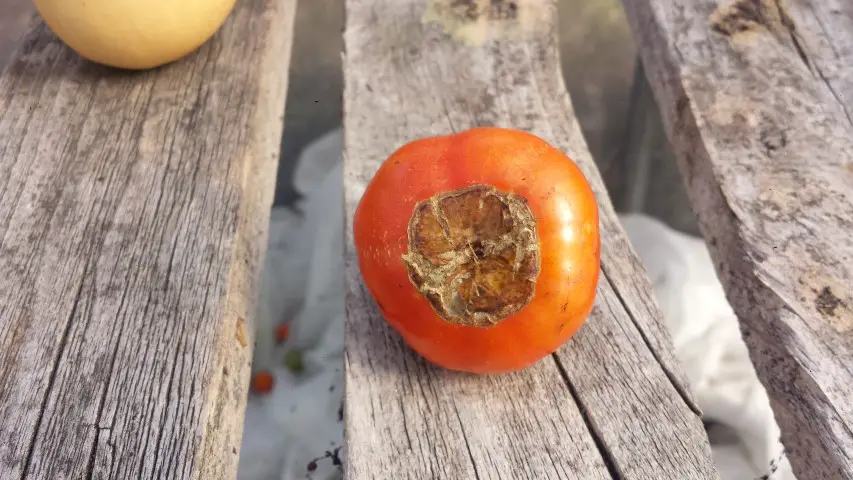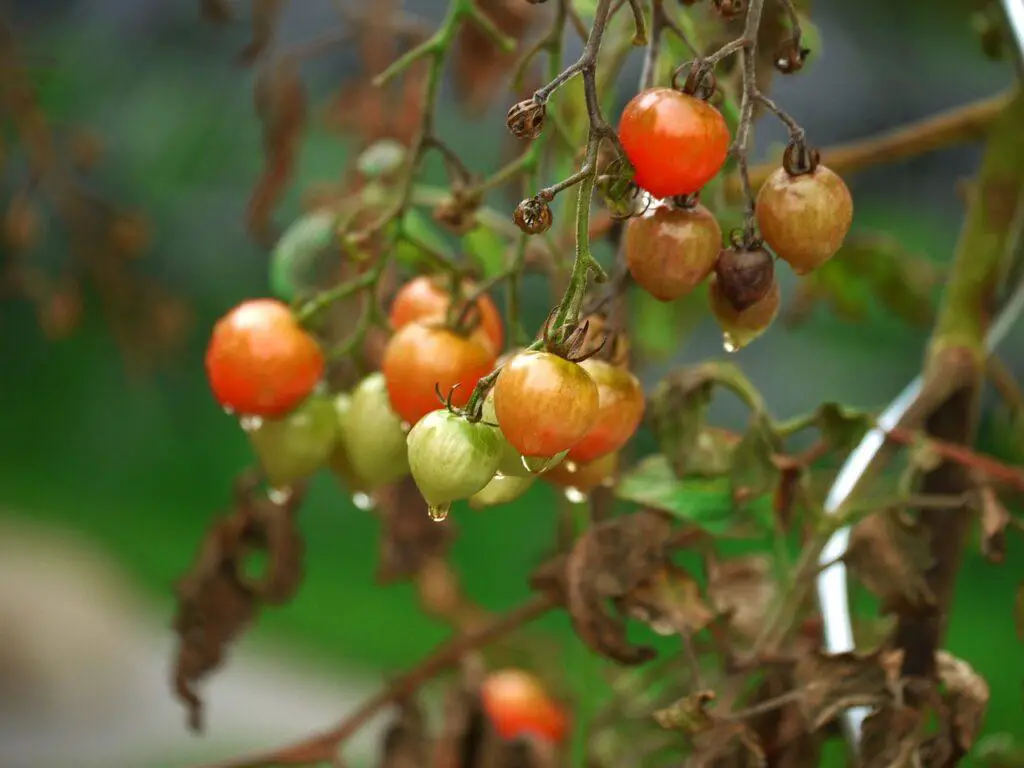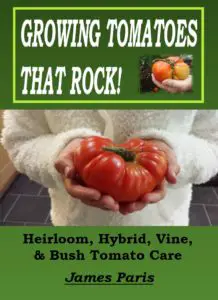Many gardeners stress themselves out with the thought that they will inadvertently under-water their tomato plants, resulting in overdoing the watering process and drowning the plant – and all with the best intentions!
The fact is that over watering is far more of a problem with tomato plant care (and for that matter most types of plant care). Maybe like me you have fallen into the trap of asking a friend or family member to take care of the plants for a few days, whilst we skip off on vacation?
Only on your return to find the plants near dead as a result of over watering – yes, they have been ‘killed by kindness’ by over-zealous friends!
Bottom line is this – if you wish to grow excellent, healthy tomatoes, then amongst other things the watering regime has to be regular and NOT to excess (more on this later).
So what exactly does over watered tomato plants look like, and how do we restore them to full health – if it’s not too late to do so?
Signs of overwatered tomato plants include…
- Wilted, yellowing (Chlorosis), and curled up leaves. Weak and thin stems with poor or no tomato fruits.
- Soil around the base of the plant can be boggy and hold water in pools.
- Mould or green algae on the surface of the soil around the plant.
The ‘root cause’ of tomato and other plants being affected in this way by overwatering, is mainly due to oxygen starvation of the root system.
Contrary to what you may expect (They are underground after all), root systems need oxygen as well as water and nutrients in order to grow properly.
With that in mind, it is obvious that when the soil is waterlogged then the oxygen cannot get to the roots, leading to the plant ‘drowning’ through lack of life-giving oxygen.
Blossom end rot and overall poor tomatoes can also be caused by overwatering, as the nutrients and minerals in the soil become too diluted for the fruits to take advantage of them
Can overwatered plants be saved?
The good news is that provided the plant is not completely dead, most of the time it can be revived by checking out the plant conditions as listed above, and making the required adjustments.
For example. If the soil is obviously water-logged, then first of all be sure that the bed is able to drain freely and is not just collecting water.
Consider your watering regime – are you watering too frequently . It is not an ‘exact science’ but for most plants once per day is adequate, and maybe twice in the height of summer or during exceptional hot dry periods.
. It is not an ‘exact science’ but for most plants once per day is adequate, and maybe twice in the height of summer or during exceptional hot dry periods.
In the case of a half-dead plant, you will have to remove it from the waterlogged soil and removing most of the soil around the roots, lay it on some absorbent paper (kitchen or toilet roll is best) for an hour or so.
After replacing the soil in the bed and/or improving the situation with moist to dryish soil, replant the tomato plant.
By following these guidelines you should find that the plant will revive in 1-2 weeks.
Signs of an underwatered tomato plant.
Tomato plants are excellent at telling you if they are thirsty – the leaves will go limp and droopy very quickly (NOT yellowing). Fortunately they will most times recover very quickly when watered again.
This however leads to another potential problem – burst and split fruit.

This situation arrives if your watering regime is not quite right, and you are perhaps leaving the plants drooping leaves to tell you they need watered – never do this!
What may happen is this. The plant gets desperately thirsty and so when water finally becomes available they quickly suck up as much as they can – leading to the fruits bursting on the vine.
It is very much like us when we get dangerously thirsty. If we suddenly gulp down masses of water in our thirst, we will be in severe danger of serious side-effects!
How to check on water levels in soil
There are of course digital soil tester to check the soil water content for you. A simpler solution though is the ‘knuckle test’. Stick your index finger up to the first knuckle, into the soil near the base of the plant. If the soil feels dry and nothing is left sticking to the finger, then it is most likely time to apply water.
to check the soil water content for you. A simpler solution though is the ‘knuckle test’. Stick your index finger up to the first knuckle, into the soil near the base of the plant. If the soil feels dry and nothing is left sticking to the finger, then it is most likely time to apply water.
After watering, there should be no water laying around on the surface for more than a few seconds as the soil absorbs what it needs.
Another simple test is to take a handful of soil and crush it in your fist. It should bond together well, with no water pouring out between your fingers (sign of too much water).
Overwatered vs underwatered plants
- Overwatered plant leaves tend to be droopy and yellowish in nature. Stems weak and thin. Possible bursting fruits.
- Underwatered leaves have a tendency to be crisp and brown in the latter stages (notwithstanding the comments above on underwatering). Curled leaves and small weak fruits.
- Overwatered plants are generally more difficult to save, even if the right steps are taken as above.
- Underwatered plants are generally easier to save with the application of water, if they have any life in them at all.
Conclusion:
As you may see, there are indeed several ‘grey areas’ when deciding if a plant is overwatered or underwatered. Hopefully however by following the signs outlined above, you will be able to decide what the actual problem is – and take the appropriate steps.
Even as a gardener for a few decades now, I have to admit to overwatering my tomato plants on occasion – usually because my head is in the clouds thinking of the next task!


